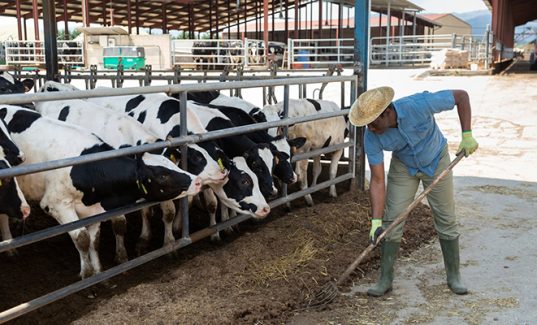Alberta producers can expect new rules this summer that require them to have a clear health and safety plan and will also spell out how they should address injuries and dangerous-work refusals.
The rules, which come into effect June 1 and apply to farms with paid employees, are part of the government’s plans to update the Occupational Health and Safety code.
The changes mean farms with fewer than 20 workers who are employed for 90 days or longer will be required to have someone designated as a health and safety representative.
 The representative, which will be chosen by the workers, will be responsible for addressing complaints, doing regular inspections, identifying and mitigating potential hazards and co-operating with an OH&S officer should there be an investigation.
The representative, which will be chosen by the workers, will be responsible for addressing complaints, doing regular inspections, identifying and mitigating potential hazards and co-operating with an OH&S officer should there be an investigation.
Farms that have 20 or more workers who are employed for 90 days or longer must establish a health and safety committee. The committee must keep records of safety meetings and make recommendations to employers on how they could improve safety.
Most Alberta farms that have paid workers employ fewer than 20 people, so most of them will likely only need to have a safety point-person. However, larger operations will likely be required to create safety committees.
“My understanding is this isn’t going to capture most farms and ranches,” said Labour Minister Christina Gray, adding she’s isn’t sure if larger farm operations already have such committees in place.
These requirements may be cumbersome at first for producers who are affected, but it should be relatively easy to do over time, said Gord Winkel, executive director of AgCoalition, which was established to provide advice to the government on how to implement the new rules.
“It’ll be new for some, but if done smartly and meets the intent, they don’t need to make it a huge bureaucratic exercise,” he said.
“It can be a bit of a get together.”
Many farms have already begun getting their safety plans in place.
AgSafe Alberta, which has been tasked with developing farm safety management tools, has created safety checklists that farmers can use. As well, consultants will be made available for free to help producers with their safety plans.
“Having a safety representative should be something to easily satisfy,” said Kent Erickson, chair of AgSafe Alberta.
“It’s a matter of that person having a binder and looking after it.”
The new rules also address employees who refuse dangerous work. Any refusal should be immediately reported to the supervisor or employer. If the issue isn’t solved, it must be inspected by the worker, safety representative and the employer.
Following that, a report must be written to state what happened and what action was taken. Workers must still be paid during the refusal, and other employees might be asked to do the job that was refused.
Employers can’t terminate or threaten to fire the worker who refused the job.
Gray said most dangerous work refusals are a result of employees having a lack of training or understanding of a task.
“Often times, that ‘hit pause and let’s look into this task’ process can relieve a lot of concerns,” she said.
If the dangerous work persists, however, any worker or the representative can ask OH&S for advice and a formal investigation. If OH&S is involved, the safety representative must accompany the officer on the worksite.
An OH&S officer can issue a stop-work or stop-use order, and employees must still be paid under these orders. Once they’re allowed to resume work, employers must report to OH&S how they’ve improved the worksite.
Source: Western Producer




